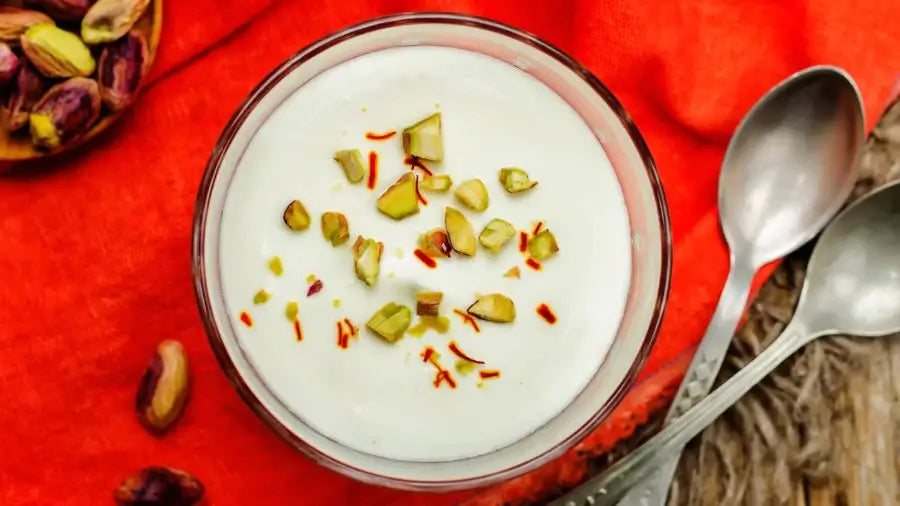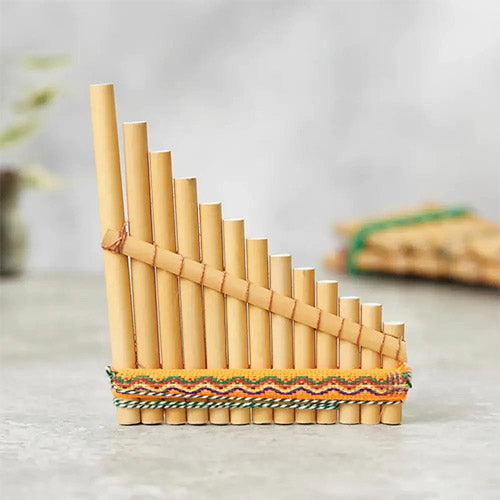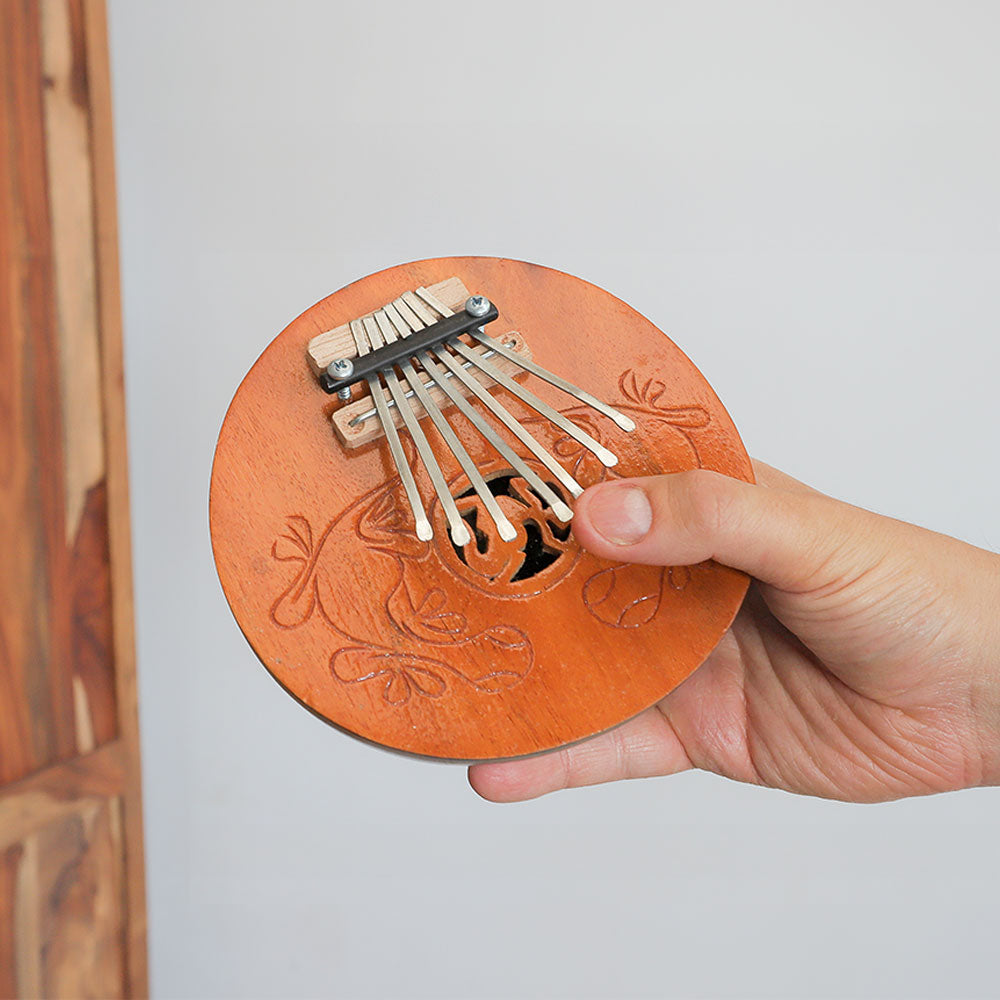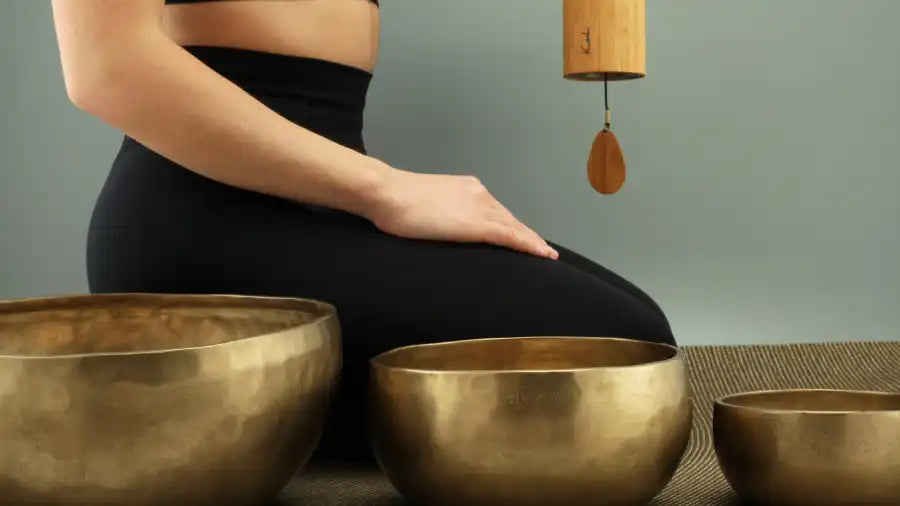Discover the most popular traditional Indian puddings and make them at home with our recipes.
1. Semiya Payasam

Semiya Payasam is a popular Indian sweet dish made from vermicelli, milk, nuts, and cardamom, often served hot or cold during festivals, birthdays, or as temple Prasad. Known by many names like Kheer and Payasa, it’s enjoyed across North and South India and can be made in under 30 minutes. With a sweet, aromatic flavor from cardamom and a crunchy texture from cashews, it’s nutritious with protein and fiber. Originally from the temple town of Puri, Pasayam has Persian influences and many varieties, with this recipe focusing on vermicelli Payasam.
Ingredients
- Vermicelli / Semiya (1/2 cup)
- Sugar (1/2 cup)
- Milk (1/2 cup)
- Ghee (2 tbsp)
- Cashew Nuts (6)
- Handful Raisins (Optional)
- Crushed Cardomom pod (1)
- Salt (pinch)
- Water (2 cups)
Method
- Firstly you will want to heat a saucepan to low heat. After heating add a teaspoon of ghee and fry the cashews until they turn golden in colour then add raisins if you are using. After a few minutes transfer the fried cashews and raisins to a bowl. In the same pan add vermicelli to medium heat and constantly stir until golden and then put into a separate bowl.
- Boil the water and then add the cooked vermicelli and salt. Boil for 5 minutes until it becomes soft then add sugar and the crushed cardamom. The Cooked vermicelli should turn transparent at this stage, continue to boil for 2 minutes and add the milk.
- Turn the heat off and let it cool and thicken. Once cooled you can then garnish with the fried cashews and raisins.
- If you have some leftover you can store it in the refrigerator for 2-4 days. You should avoid freezing this dish as the texture will be negatively affected.
Is Kheer and Payasam the same?
Kheer, Khir, and Indian rice pudding are often used interchangeably for the term Kheer. In the southern part of India, Kheer is called Payasam or Payasa, meaning Milk. The difference between the kheer and payasam is that Payasam is typically made with jaggery and the consistency is usually thinner.
Is Payasam good for health?
Payasam is nutritious, gluten-free, and easily digested, making it a healthy part of a balanced diet. It’s a good source of calcium, can help lower cholesterol, provides energy from carbohydrates, and may reduce colon cancer risk. However, because rice-based Payasam has a high glycemic index, it may not be suitable for weight loss or blood sugar control in diabetics.
Can you freeze Payasam?
Don’t freeze it just put put it in the fridge. Freezing it will affect the texture as vermicelli is a very thin noodle. After storing in the fridge you can add cold milk to it to reheat.
How do you reheat payasam?
Typically payasam is served hot but some people like to eat it cold. When reheating payasam you should heat it in a bowl over a saucepan of water (kind of like a double boiler) - This is simply to avoid burning it. If you cook it straight in a saucepan it will likely burn around the sides and make cleaning more difficult. Add a little milk to get the dish to the right consistency.
Where is Payasam from?
Payasam is basically from Asia but the recipe was given to them by Persians. To be clear, this sweet dish originated in Iran.
Why does Payasam develop burnt taste sometimes?
Payasam sometimes develops a burnt taste due to the Maillard reaction, where milk sugars turn to carbon. Adding more spices like cardamom only masks the burnt flavor, not removes it. To reduce the burnt taste, use bay leaves for the smell, transfer to a clean pan, change utensils, and if needed, heat ghee with cinnamon sticks before adding the Payasam back—this can help fix the burnt flavor.
2. Rava kesari

Rava Kesari is a South Indian dessert, often eaten for breakfast, made from semolina, ghee, saffron, nuts, and sugar, and can be prepared in under 25 minutes. Similar to Sheera or Suji Halwa, it’s commonly served in Karnataka and tastes like fruit cake with cardamom freshness.
Typically eaten alone or garnished with cashews and raisins, it’s also offered as Naivedyam to Hindu deities during festivals and special occasions. Its northern counterpart, Sooji ka halwa, is equally popular, and many Rava Kesari variations exist.
Ingredients
- Semolina (1 cup)
- Sugar (1 cup)
- Water (2½ cup)
- Cardamom powder (¼ tsp)
- Saffron (2 pinches)
- Ghee or Butter (5tsps)
- Cashew (12)
- Raisin (12)
Method
- Add two tablespoons of ghee to a heavy bottom pot and fry cashew until it turns light golden. Then add raisins and fry them until they swell up. Remove and place them on a plate and set aside.
- In the leftover ghee, add the Rava and fry on low to medium heat until it is aromatic and crunchy (Do not overheat or let it brown) - While the Rava is cooking, pour water into another pot and bring it to a boil.
- Once the water has become boiling, pour it into the Rava by consistently stirring it to prevent lumps. The water will be absorbed by the semolina soon. Keep going and make sure there are no lumps.
- When you see there is no excess water in the pan, cover and cook on low flame for 2 - 3 minutes. This is to ensure that the Rava is cooked entirely and turns fluffy.
- Add sugar and mix well. The sugar will dissolve slowly and will make the entire dish go gooey. Keep stirring and cook until the mixture thickens and the moisture has evaporated.
- Sprinkle cardamom powder slowly, saffron or Kesari food colour, and the rest of the ghee. Mix it well and cook for 2 - 3 minutes. Then remove from the pan and cover for 2-4 minutes.
- Grease a mould or round cup and then scoop some Rava Kesari into it. Level the top. Invert the bowl to a plate and gently shake off excess.
- Finally, garnish each Kesari with cashews and nuts. You can also fluff up the Rava Kesari with a fork if you’d like.
Is Rava Kesari Good For Health?
Rava Kesari does not use any unhealthy food colourings, and if made with whole-grain Rava (semolina) it will be healthier to eat. Another thing that will determine how healthy the dish is - is the amounts of sugar and milk. Whole fat milk will make the pudding heavy, which is why we recommend using half and half of water and semi-skimmed milk.
What can I use instead of Kesari Powder?
Kesari powder is an orange-yellow food colourant known for its toxic effects, so we recommend using saffron as a perfect natural alternative.
Who invented Rava Kesari?
Rava Kesari became famous in the Indian state: Tamil Nadu during the period of the Maratha Empire around the 18th century. After that, it spread throughout India and has an ancient history from its adaption of other treats known as 'Irmik Helavsi' or semolina halva.
How much water for Rava Kesari?
Most people prefer to use 2 ½ cups of water. Usually, Rava or suji absorbs about 3 cups of water for 1 cup of Rava to yield a soft Kesari with a mouth-melting texture. Using 3 cups will give great texture but use enough ghee as mentioned in the recipe. Do not reduce the ghee, or it will turn sticky.
3. Soft Rasmalai

Rasmalai is a festive dessert from Eastern India popular in Bangladesh and Kolkata, is made from milk, lemon, sugar, and saffron, served cold with pistachios. It’s low in sugar and salt but high in calcium, featuring spongy balls soaked in clotted cream and garnished with almonds, cashews, and saffron.
Traditionally served at festivals like Diwali and Holi, it’s gaining popularity in the UK and US as a healthy exotic alternative to Western desserts. Use whole milk or cream for best results, as the milk fat is essential for the soft texture.
For the Rasmalai balls
- 1 litre whole milk
- 4 tablespoons lemon juice
- 1 teaspoon cornflour
- Water
- 1 cup of sugar
For the ras syrup
- 500 ml whole milk
- 5-6 green cardamom pods peeled and crushed to get the powder
- saffron a pinch
- 3-4 tablespoons sugar
- finely chopped pistachios
Method
To make rasmalai, boil milk in a saucepan, then cool it by adding ½ cup water. After 5-10 minutes, add lemon juice gradually to curdle the milk. Strain and rinse the curds to remove lemon juice, then gently squeeze out excess water, keeping them soft and moist.
Mash the curds with cornflour until smooth, then shape into small balls (15-17 for 1 litre milk) that will double in size when cooked. Boil 1 cup sugar with 4 cups water, drop in the balls, and cook on high heat for 15 minutes, adding water if needed to prevent sticking.
Check doneness by seeing if balls sink in fresh water. Meanwhile, thicken 500ml milk by boiling, add soaked saffron, crushed cardamom, and pistachios, then turn off heat. Flatten cooked balls, soak in sugar syrup for 15 minutes, transfer to thickened milk, and chill for 5 hours or overnight. Garnish with pistachios and saffron before serving.
4. Gajar halwa carrot fudge

This recipe requires time and patience but yields a memorable, flavorful dessert with fruity, nutty, and sweet notes, served hot or cold. Known as gajorer halua, gajrela, or gajar pak, it’s popular in India, Pakistan, Nepal, and Bangladesh and available in English stores. Serving up to six, you might want to double the ingredients for more. Gajar halwa is rich in protein, vitamins A, B1, B12, D, B2, potassium, magnesium, and calcium from the milk, while ghee adds antioxidants and amino acids.
Ingredients
- Fresh carrots scrubbed and finely grated (500g)
- Milk (1 litre)
- Sugar (150g)
- Ghee (4 tbsp)
- Rosewater essence (few drops)
- Ground cardamom (1 tsp)
- Almond (25g) pistachio (25g) raisins (25g)
- Dried dates (4)
Method
Place finely grated carrot into a pan with the milk and cook over medium heat until dry and thick. It will take around 1 hour and a half. Stir all the time and observe, so it does not burn. When you can pull the mixture away from the pan easily, it is ready.
Add the sugar and stir until dissolved and absorbed. It will go runny again when you add the sugar, so expect to spend another 20 minutes on this. Add 4tbsp of pure ghee and fry until it goes a pleasant dark orange-brown colour.
Mix in the rosewater and ground cardamon, leave to set in a shallow greased baking tin or a large plate overnight in the fridge. Cut into squares and decorate with fruits and nuts. You will need to soak the dates in cold water first. Serve and enjoy.
5. Moong dal ladoo

Laddu or ladoo is a sweet that originated in the Indian subcontinent. These are sweet golf ball-sized treats typically made from flour, fat and sugar. We have tried these treats made by a company called Haldiram, and they were delicious but are quite expensive for what they are, and unfortunately too many come in a box to be able to eat them all, so we prefer to make them ourselves.
They are extremely moreish, but as they contain a lot of sugar, you should be mindful of how many you eat. This recipe makes 10 round-shaped sweet lentil balls. They stay fresh for about ten days in an airtight container. If they have been fried, you should keep them in the refrigerator for best results.
Whilst they are often made with gram flour, you can also make them with semolina or lentils; this recipe uses green moong dhal as its base. Motichoor ladoo is also known as Boondi ladoo - the main difference between them is that Motichoor is typically smaller than Boondi - other than the fact that Boondi contains Saffron syrup, the ingredients remain the same. Sometimes other ingredients like chopped nuts and fruits are added to them. For special occasions they may be topped with an edible gold leaf decoration.
Popular variations of this dessert include
- Coconut ladoo
- Urad dal ladoo,
- Moong dal ladoo (green mung beans)
- Sabudana ladoo (tapioca pearls)
- Shahi ladoo (dates and figs),
- Laai ladoo (amaranth),
- Murmura ladoo (puffed rice)
- Rava ladoo (semolina)
- Atta ladoo (wholemeal flour)
- Mootichoor ladoo (gram chickpea flour)
- Til ladoo (Sesame seeds and peanuts)
Ingredients
- Green moong dhal (450g)
- Water (300ml)
- Brown sugar (450g)
- Dried milk powder (225 g)
- Ground green cardamon seeds (1/2 tsp)
- Chopped mixed nuts (50g)
- Green food colouring powder (1/4tsp)
- Desiccated coconut (to finish)
- Knob of ghee
Method
Remove grit from the dhal, wash and dry in medium to high heat in the oven. Once dried, add to coffee grinder into flour. Make a syrup by boiling your water and sugar stir until a thick syrup. This takes around 10 minutes.
Mix the dhal flour with the milk powder, cardamom powder, food colouring and nuts together. Add it all into the syrup until you obtain a stiff, sticky mixture. Keep this on low heat and continue stirring, then add in the knob of ghee.
Spoon a little bit of mixture at a time and roll into golf balls or your preferred size; the smaller they are, the more you can make. Roll them into the desiccated coconut. Keep the mixture on a low heat and stir until you have made all of the balls, then allow them to cool, serve and enjoy.
6. Mawa cake recipe

Mawa cake, or milk cake, is a popular Indian subcontinent dessert enjoyed in India, Nepal, Bangladesh, and Pakistan, named after regional terms for milk like mawa or khoya. Serving six, it pairs perfectly with masala tea.
This light, airy sponge cake has a creamy texture similar to banana bread, flavored subtly but with cardamom, and topped with crunchy pistachios and almonds for texture contrast. It holds together well when sliced and can be baked in layers with whipped cream, pistachios, and cardamom as filling for a birthday cake. Traditionally made with 200g sugar, reducing to 130-150g still delivers ample sweetness and better taste, allowing adjustment to personal preference.
Ingredients
- All purpose flour (170g)
- Baking powder (1/2 tsp)
- Cardamom Powder (1/4 tsp)
- Sea salt (pinch)
- Khoya / Mawa / Milk powder (100g)
- Unsalted butter (85g)
- Sugar (150g)
- Eggs (2)
- Milk (100ml)
- Peeled almonds (for garnish)
- Chopped pistachios (for garnish)
Method
- Start by preheating your oven to gas mark 4, then grease a 7" cake tin and set it aside.
- In a bowl, sieve together flour, cardamom powder, baking powder, salt, combine, then set aside.
- In another bowl, whisk together the milk powder, butter and sugar with an electric whisk for about 5 minutes until fluffy.
- Add one egg to the mixture at a time and whisk until combined.
- Add a little flour and milk and mix in between to ensure that the batter remains smooth and pourable.
- When everything is combined, pour the batter into the cake tin and sprinkle the almonds and pistachios on top.
- Place the cake tin into the oven to bake for about one hour. You can test if the cake is cooked by inserting a skewer into the centre of the cake. If it comes out clean, it is cooked.
- Remove the cake from the oven, allow it to cool and serve with masala tea.
7. Lagan nu custard
Regular vanilla custard originated in Europe but the history of Lagan nu custard is different. The words Lagan nu custard means wedding custard and in fact, the firm Parsi milk pudding is served at weddings. This dessert is flavoured by the ground cardamom and nutmeg, it can be served and enjoyed hot or cold and is popular in Bombay.
Lagan nu custard is an alternative to the classic caramel custard, it looks like a cake tart but is typically topped with chopped pistachio nuts and flaked almonds. This recipe serves four people. Some recipes swap out the double cream for condensed milk so feel free to make that swap if you would like.
Ingredients
- Milk (600ml)
- Sugar (75g)
- Eggs (3)
- Double cream (150ml)
- Rosewater (few drops)
- Chopped nuts and ground cardamom (for garnish)
Method
Boil milk and sugar over a low heat whilst stirring continuously until it reduces by one third. Remove from heat and allow it to cool. Separate the egg yolks and whites and whisk in separate bowls. Add the cream yolks and rosewater to the milk and whisk until blended.
Then fold in the whipped egg white. Add the mixture to a baking dish, then bake in a hot oven for a half-hour on gas mark 7. Garnish it with nuts and cardamom if you wish.
8. Mango mousse

If you can't find a lemon or lime jelly without sweetener, you should swap it for a jelly that contains sugar like orange jelly. The reason why is because sweetener is in many cases more harmful than sugar, and it can make your food taste like chemicals.
Trust this process, and you will have the perfect fluffy mousse that is bubbly airy and light. It melts in your mouth when you taste it; changing up the lime jelly for orange gives it a real variation of flavour and complements the mango flavour very well. It would go great as a fruity element to a trifle. Whilst in this recipe all of the ingredients are mixed together, you can keep them separate if you want to layer them in a glass a dessert or if you'd prefer to serve the mousse and jelly separately. This delicious Indian dessert Pairs very well with a plain biscuit or a slice of mawa cake.
Ingredients
- Lemon or lime jelly (1 packet)
- Boiling water (600ml)
- Lime juice (25ml)
- Grated lemon peel (1)
- Double cream (225ml)
- Tin of mangoes (1) or whole mango
- Egg white (1)
Method
Chop up the jelly and add to the boiling water and the lime juice and lemon peel. Set aside to cool. Whip the cream until thick and bouncy. When you have a good consistency, add the chopped mangoes keep mixing until well combined. Then add the cream and mangoes to the liquid jelly mixture and stir well until the cream has settled into the mixture.
Whisk the egg white in a separate bowl with some electric whisks at high speed until you get stiff peaks. Fold into the other ingredients; the key is to keep mixing until everything is well combined. Then leave to set in the fridge for around 3/4 hours. Once set, enjoy. I would recommend making this dessert a day in advance due to the effort that is needed and the time it takes to set properly for the best outcome to leave overnight.
9. Gulab Jamun

Gulab Jamun is a spongey cake ball that is immersed in sticky sugar syrup. We first tried the Indian sweet on the 16th of March, 2021, and the flavour was incredible. We expected it to taste similar to a doughnut, but the taste was very different. As you bite into it, you instantly get the subtle taste of fresh cardamom and pistachio. Since we first tried it, we have been testing out recipes to make our own, and this one is it!
You can fry the gulab jamun in ghee or vegetable oil, and whilst vegetable oil will be fine, ghee will add a better flavour. These are traditionally served cold. However, we preferred the dessert warm. This recipe makes 8, but if you want to make more, double or triple the recipe.
Ingredients
- Plain flour (1tbsp)
- Milk powder (175g)
- Yoghurt (1 tbsp)
- Ground almond (1 tbsp)
- Ground cardamom (1/2 tsp)
- Water (300ml)
- Sugar (175g)
- Rosewater (1/2 tsp)
- Oil for deep frying
Method
Mix the flour, milk powder, yoghurt, ground almond, cardamom and a little water to achieve a stiff dough. Leave the dough to stand for about 2 hours, then form into eight balls. Boil the water, add the sugar and simmer until you get a thick syrup, and add the rosewater.
Preheat the oil or ghee for deep frying and keep it at medium heat. Fry them for at least 5 minutes as they need to cook on the inside and out. When cooked, they should be brown. The inside will remain a sponge cake colour. When they are cooked, remove excess oil, let them cool a little, then place them in the warm syrup and refrigerate until you are ready to serve.
10. Jalebi dessert

This recipe takes two days to make and makes ten. The jalebi can be served hot or cold, and frying the jalebi does take a bit of practice. Don't expect a perfect first time.
Jalebi is a deep-fried sweet snack that originated in India. It is, however, popular in Bangladesh, Iran, Pakistan, Tunisia, and Africa. In different regions, the dessert has different names. It is known as jilapi, jalebi, jilipi, zulbia, jerry, mushabak, or zalabia.
Ingredients
- Plain flour (225g)
- Plain yoghurt (2 tbsp)
- Saffron strands (1 tsp)
- Water (300ml)
- White sugar (225g)
- Rosewater (1/2 tsp)
- Oil for deep frying
- Chopped pistachio nuts (2 tbsps)
Method (Day 1)
Combine flour, a little warm water and yoghurt to make a thick-ish batter. Add in your saffron strands and place them into the airing cupboard or a warm place for a maximum of 24 hours, but you can also use them after 12 hours as this allows the yoghurt to ferment.
Whilst making your fermented yoghurt, you will want to make the syrup by boiling water and adding sugar. Boil for 10 minutes, often stirring to avoid the sugar burning. Take off the heat when you have a thick syrup add the rose water, and cool for the same length as the batter is being left (12-24 hours)
Method (Day 2)
Stir the batter well, add a little warm water if you need but keep it thick, preheat oil for deep frying until reasonably hot. Fill a large clean plastic bag with the batter and grasp firmly, and cut a small hole with scissors in the corner of the bag to make it possible to be piped out into the oil.
Squirt the batter into the hot oil in squiggles and figure eights or whatever shape you want. To stop pouring and allow them to cook, pull the bag away from the pan, point up and stop squeezing.
Don't overcook the jalebi. Turn the jalebi over once. When golden on both sides, remove them from the oil drain well on kitchen paper and place them into the cold syrup. Soak in the syrup for no longer than 5 minutes, then sprinkle them with some chopped pistachios before serving.
11. Kulfi Indian ice cream

Kulfi is a popular Indian dessert, it is firmer and sweeter than regular ice cream but can easily be made at home. This recipe serves four and it has a great story about how it used to be made at the beginning. The emperors of Moghul used to send runners into the Himalayas to carry back huge chunks of ice to prepare ice cream, but when they returned, the ice would be no bigger than regular ice cubes.
Ingredients
- Condensed milk (225g)
- Double cream (450ml)
- Sugar (50g)
- Vanilla essence (3 drops)
- Chopped pistachio nuts (50g)
- Chopped almonds (50g)
Method
Heat the condensed milk and cream until boiling, then add the sugar. Simmer for 15 minutes, often stirring, then halfway through, add in the vanilla essence. The mixture will thicken, which is when you should add the nuts in. After that, place the mixture into a container and put it in the freezer for at least 24 hours.
Kulfi variations
Saffron kulfi - Add 1 tsp of saffron to the milk and sugar.
Pistachio kulfi - Add 50g of crushed pistachio nuts and a couple of drops of rose water to the kulfi base.
Almond kulfi - Fold 25g of ground almond, 25g of sliced almonds and a few drops of almond extract into the condensed milk.
Mango kulfi - Puree a mango in a blender until smooth, measure 150ml of the puree and add a pinch of ground cardamom to it then add to the condensed milk.
12. Indian fudge

Introducing various types of traditional Indian fudge, there are many types. The first one we are going to introduce you to is a Barfi fudge, it stays fresh for 4 days and is delicious.
Barfi fudge
Ingredients
- Sugar (175g)
- Water (1 cup)
- Milk powder (225 g)
- Ground almond (2 tsp)
- Ground green cardamom (1/2 tsp)
- Rosewater (1/2 tsp)
- Edible silver or gold leaf (optional)
Method
Boil the sugar and water on low heat to make a syrup. Add in the milk powder, almonds, cardamom, rose water, and enough water to make it pourable. Mix until thick and remove from the heat, and put into a non-stick oven dish. When cool and set, remove from the dish and cut into fudge sized pieces.
Suji Halwa
suji halwa is another type of indian fudge made from semolina. This dish can be served for breakfast or as a dessert in India; it is sweet and nutty. It is simple to make and is to be served cold, the recipe is suitable to feed 4 people, but if you double it, there will be more to go around.
Ingredients
- Semolina (75g)
- Water (2 cups)
- White sugar (75g)
- Pinch of salt
- Saltanas fried in ghee (2 tsp)
- Chopped walnuts (2 tsp)
- Ground cardamom (1/2 tsp)
- Desiccated coconut (1 level tbsp)
- Butter (50g)
Method
Put the semolina into a dry pan, cook over medium heat until golden brown, do not let it burn. Once browned, put the pan to one side. Boil water in another pan and add sugar, salt, sultanas, walnuts, cardamon and coconut and turn down to a simmer, then stir the mixture to blend it.
Add the butter and slowly add in the semolina stirring all the time. The mixture will slowly thicken when it's completely blended, and the consistency of mashed potato turn onto a serving dish decorate and chill before serving.








